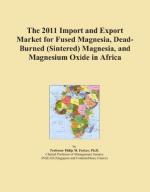|
This section contains 711 words (approx. 3 pages at 300 words per page) |

|
Overview
Magnesium oxide (mag-NEE-see-um OK-side) is available commercially in several forms, depending on the way it is prepared and the use for which it is intended. Most forms can be classified as either "light" or "heavy" depending on particle size, purity, and method of production. It occurs in nature in the form of the mineral periclase. In its purest form, magnesium oxide is a colorless or white crystalline material or very fine powder, with no odor and a bitter taste.
Key Facts
Other Names:
Magnesia; calcined magnesia; magnesia ulba
Formula:
MgO
Elements:
Magnesium, oxygen
Compound Type:
Metallic oxide (inorganic)
State:
Solid
Molecular Weight:
40.30 g/mol
Melting Point:
2,825°C (5,117°F)
Boiling Point:
3,600°C (6,500°F)
Solubility:
Slightly soluble in water; soluble in most acids; insoluble in alcohol
How It Is Made
A number of methods are available for the preparation of magnesium oxide. Most methods begin with either...
|
This section contains 711 words (approx. 3 pages at 300 words per page) |

|


